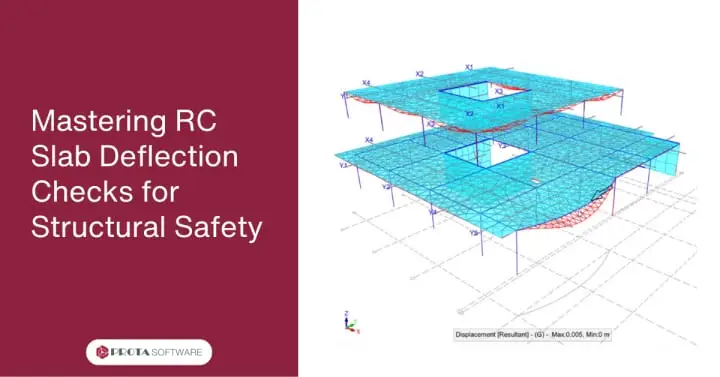
RC Slab Deflection Checks Your Guide to Structural Safety
Mastering RC Slab Deflection Checks for Structural Safety
Deflection of RC (Reinforced Concrete) slabs is a pivotal aspect to consider in structural engineering projects. Deflection refers to the deformation or bending of a structure or structural member under an applied load. Accurately predicting and controlling deflection is paramount to ensure the safety and performance of a structure. In this blog post, we will delve into the importance of RC slab deflection checks, the factors affecting deflection, and the methods used to calculate and analyze deflection in structural engineering projects.
Why is it important to perform RC slab deflection checks?
Performing RC slab deflection checks is vital to prevent structural failures and ensure the longevity of a building. Excessive deflection can lead to cracking, which may compromise the structural integrity of the building. Additionally, deflection checks are necessary to comply with building codes and regulations that set limits on allowable deflection to guarantee the safety of occupants and the structure itself.
Which parameters are considered in this process?
Several parameters are considered during RC slab deflection checks, including:
- Material properties: The type and quality of concrete and reinforcement used in the slab.
- Slab thickness: The thickness of the slab plays a significant role in its ability to resist deflection.
- Span length: The length of the slab between supports affects its deflection.
- Load type and magnitude: The type (live or dead load) and magnitude of the load applied to the slab.
- Support conditions: The type and location of supports can influence deflection.
Steps of RC Slab Deflection Check
- Determine the material properties of the concrete and reinforcement.
- Calculate the moment of inertia of the slab.
- Identify the type and magnitude of the load applied to the slab.
- Determine the span length and support conditions.
- Use the appropriate formula or software to calculate the deflection of the slab.
- Compare the calculated deflection with the allowable limits set by building codes and regulations.
Conclusion
RC slab deflection checks are an integral part of structural engineering projects. They help prevent structural failures, ensure compliance with building codes, and guarantee the safety and performance of a structure. By considering factors such as material properties, slab thickness, span length, load type, and support conditions, engineers can accurately predict and control deflection to ensure the longevity and safety of a building.
Stay updated with the latest from Prota Software by following us on our social media channels:
Don’t miss out on the wave of innovation. Engage, learn, and transform with Prota Software.








